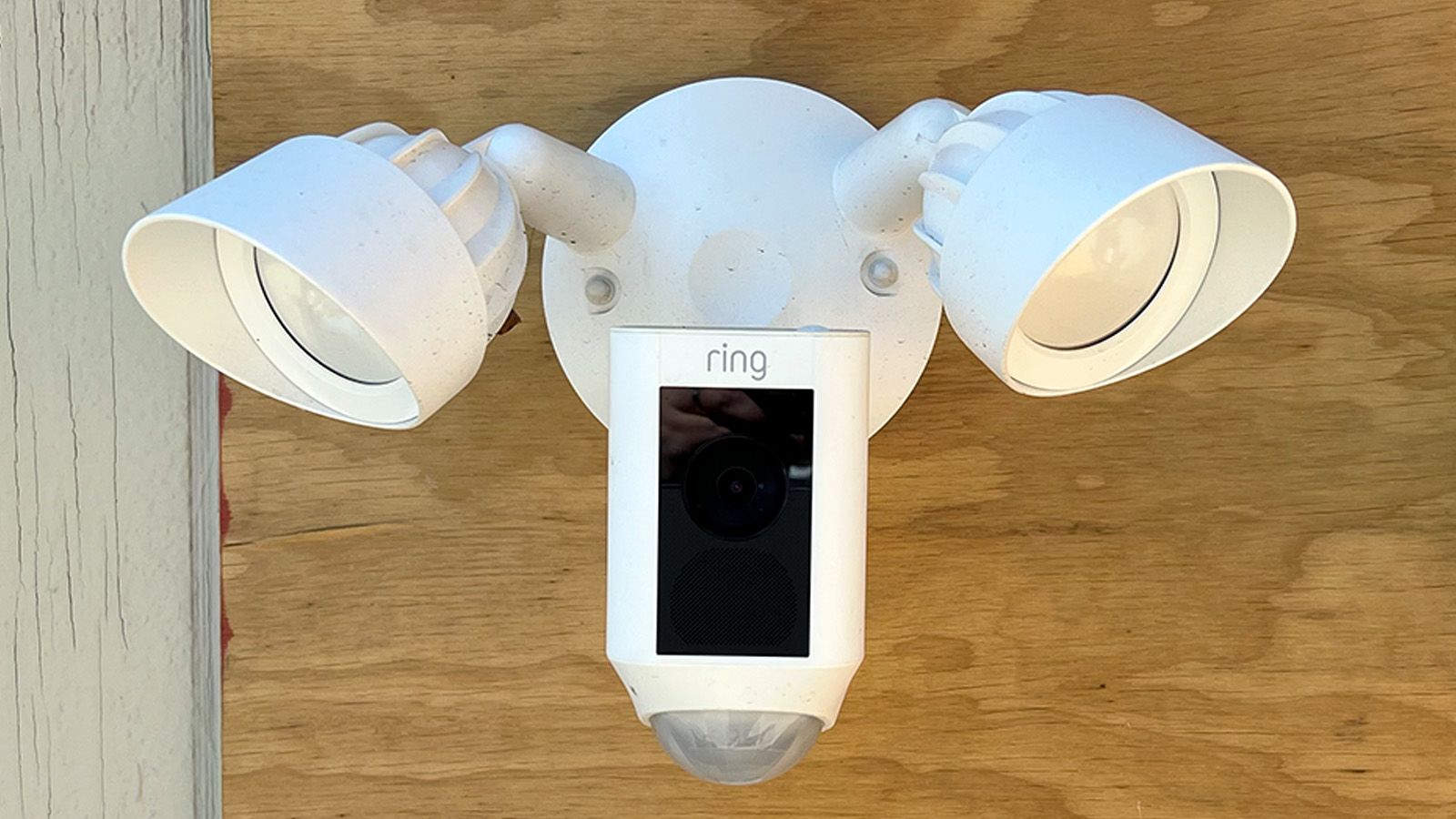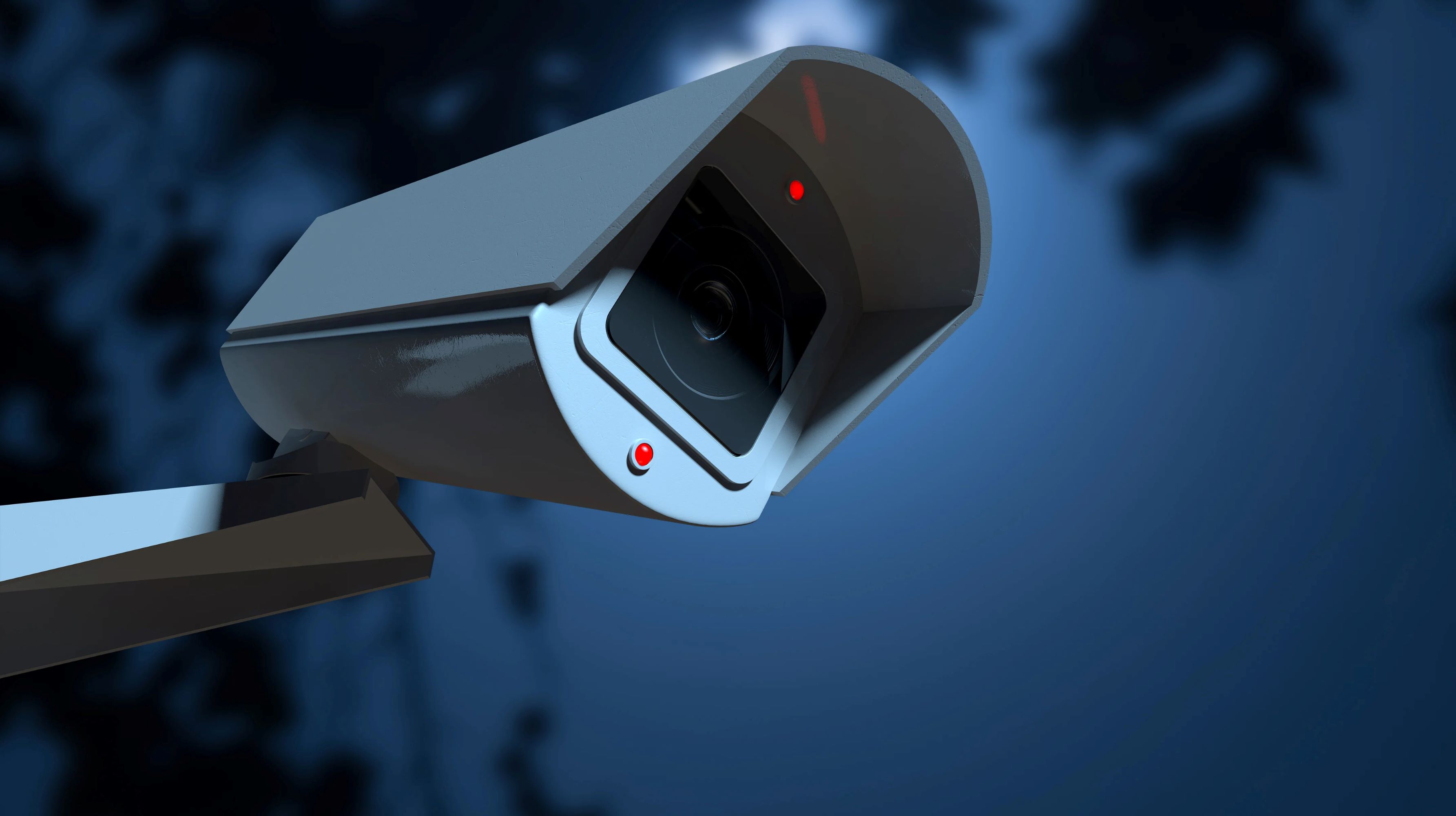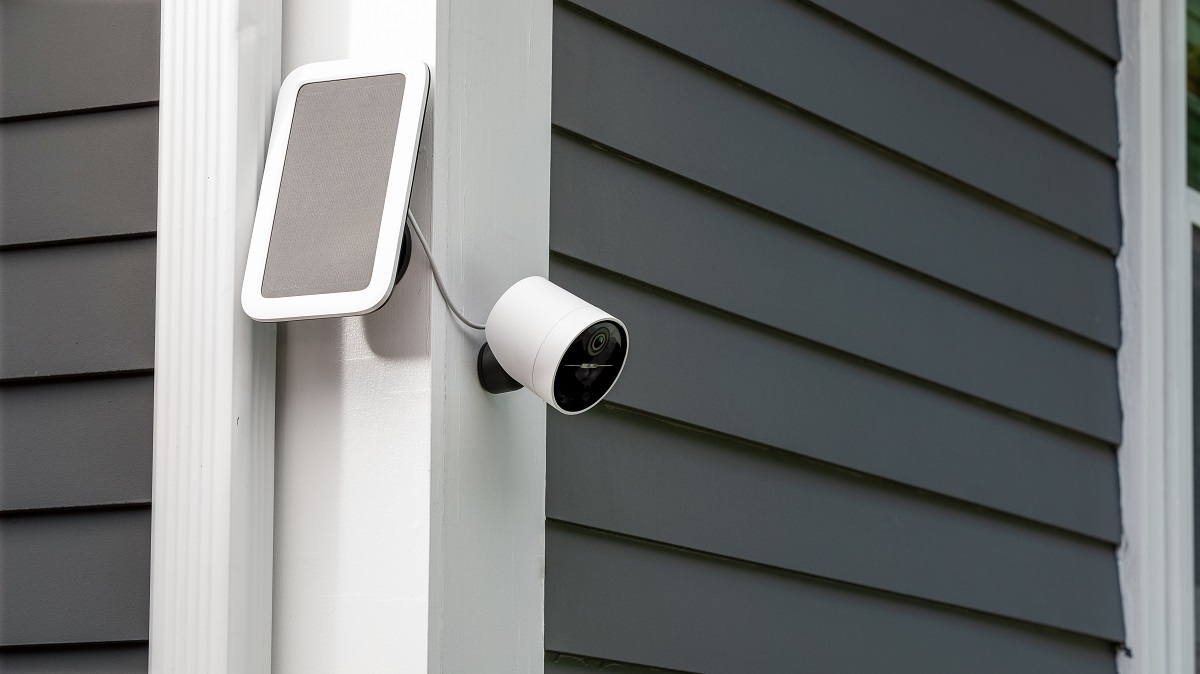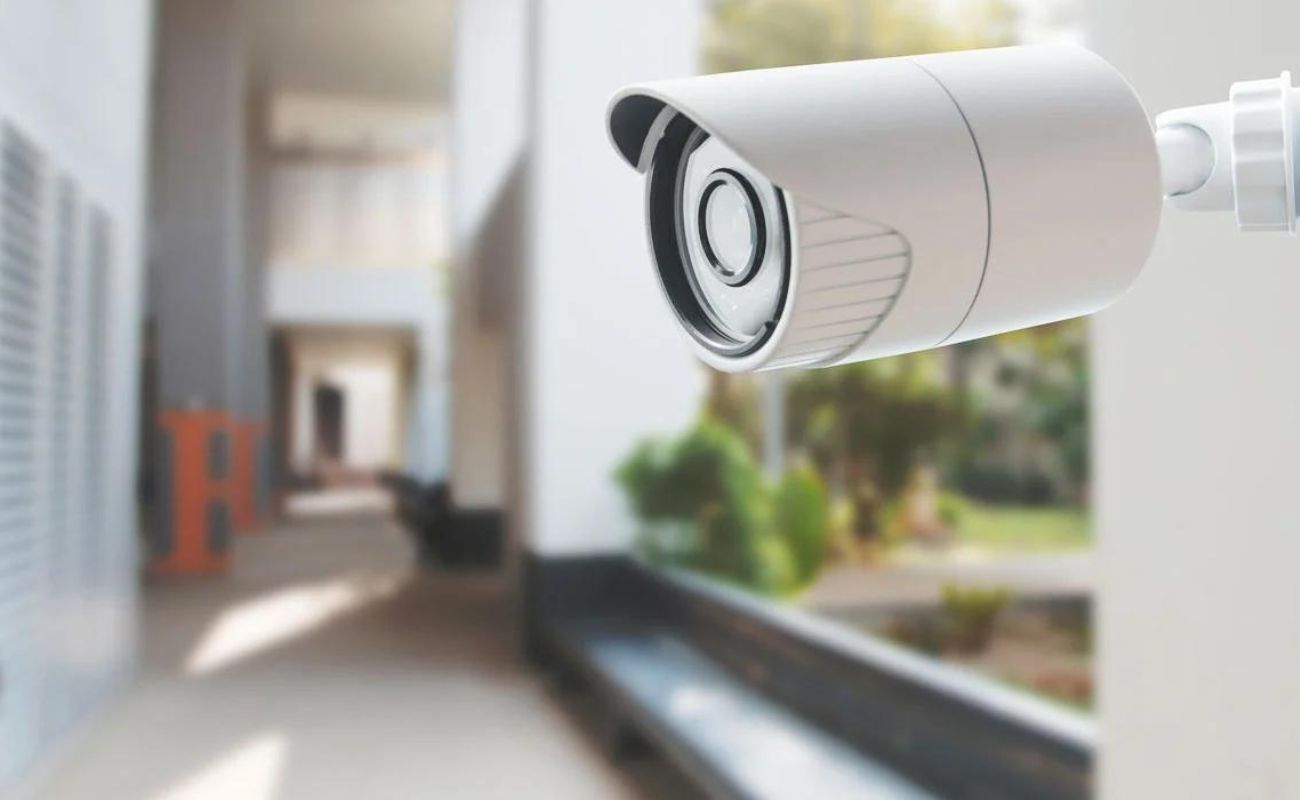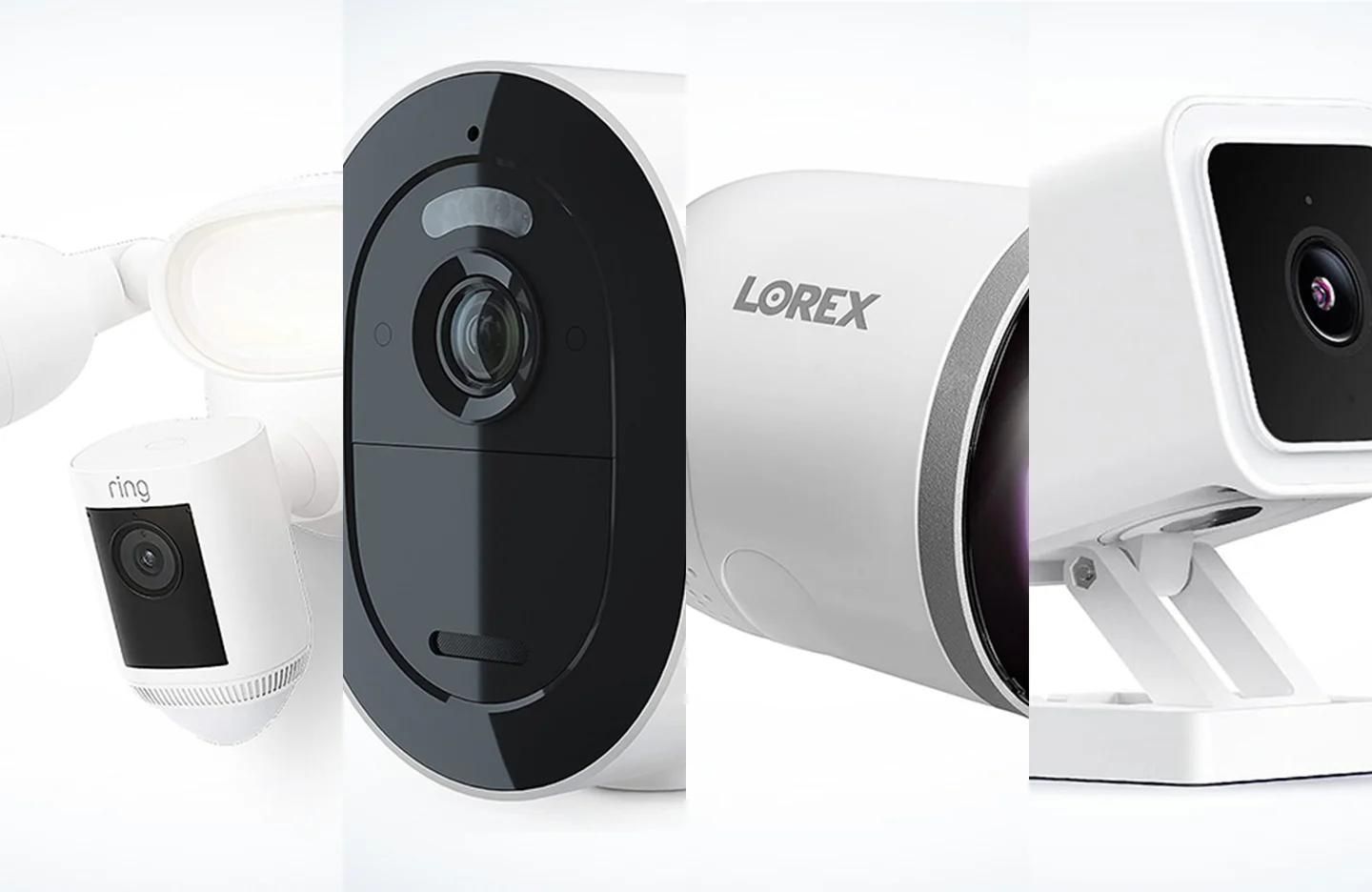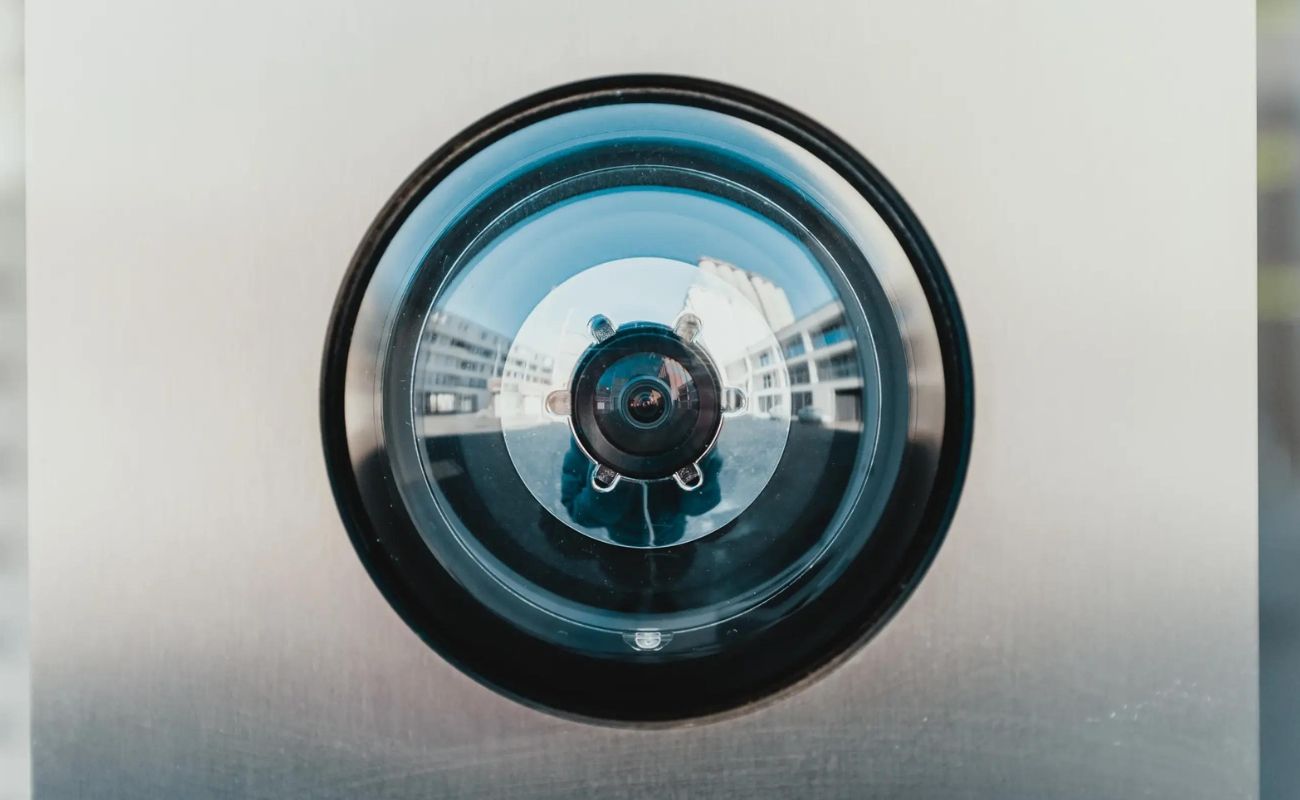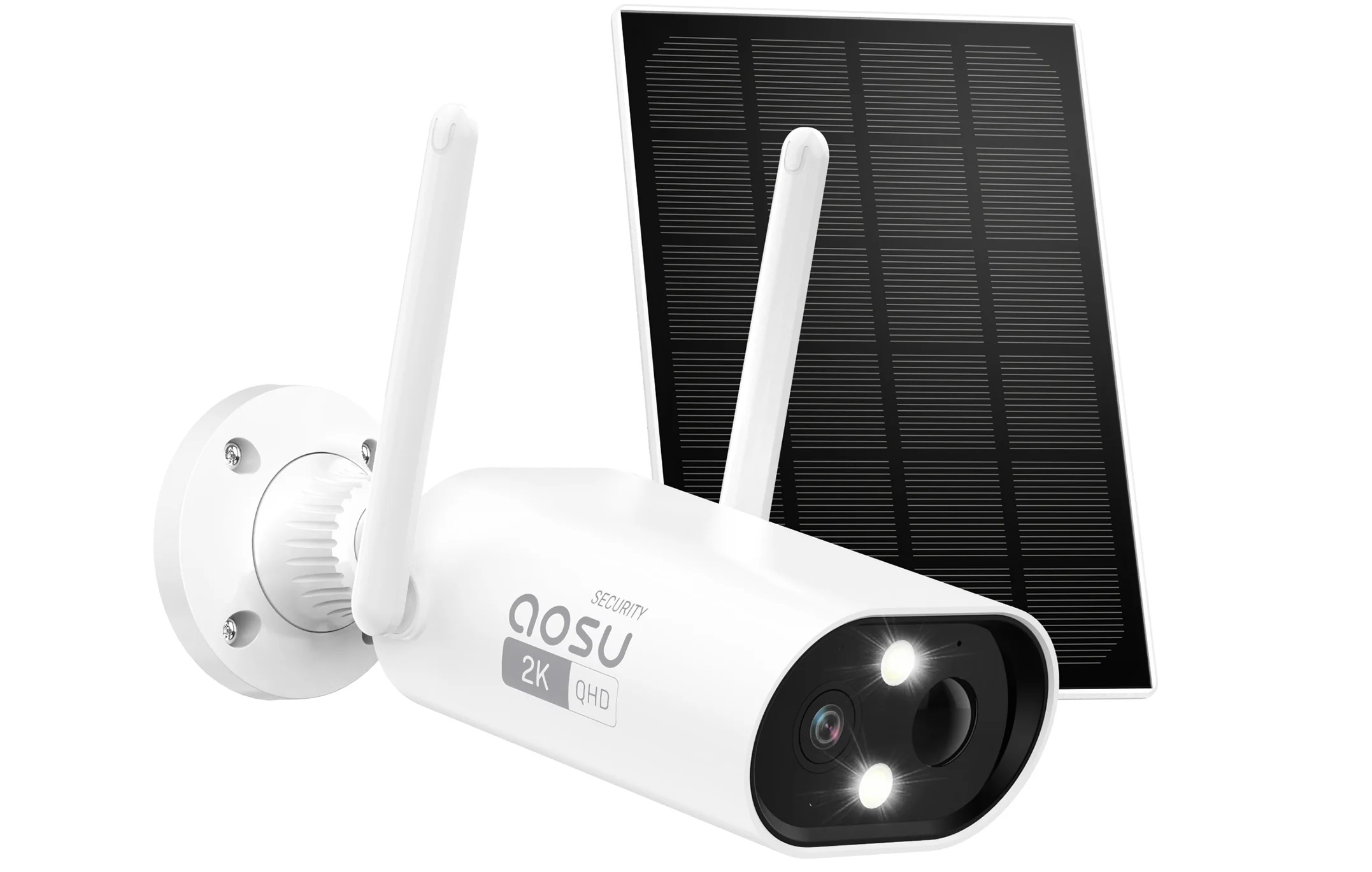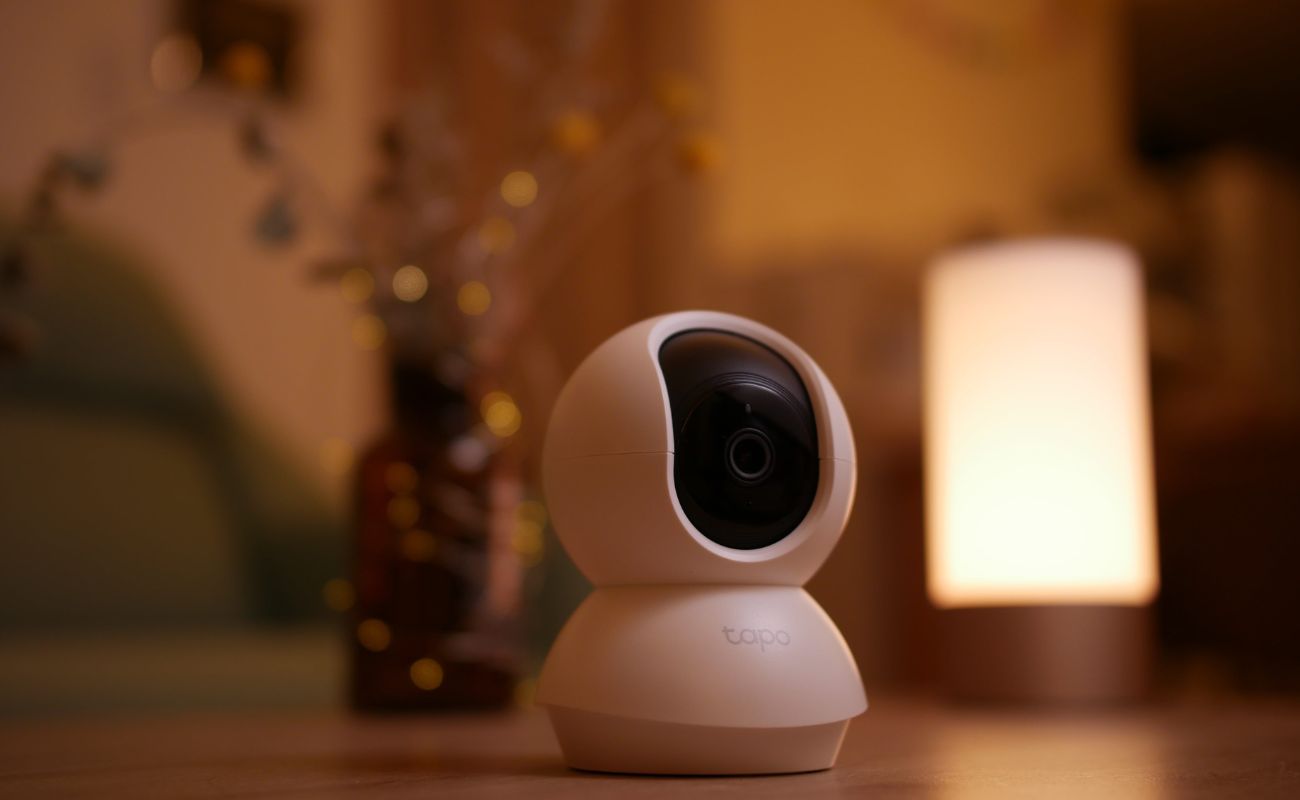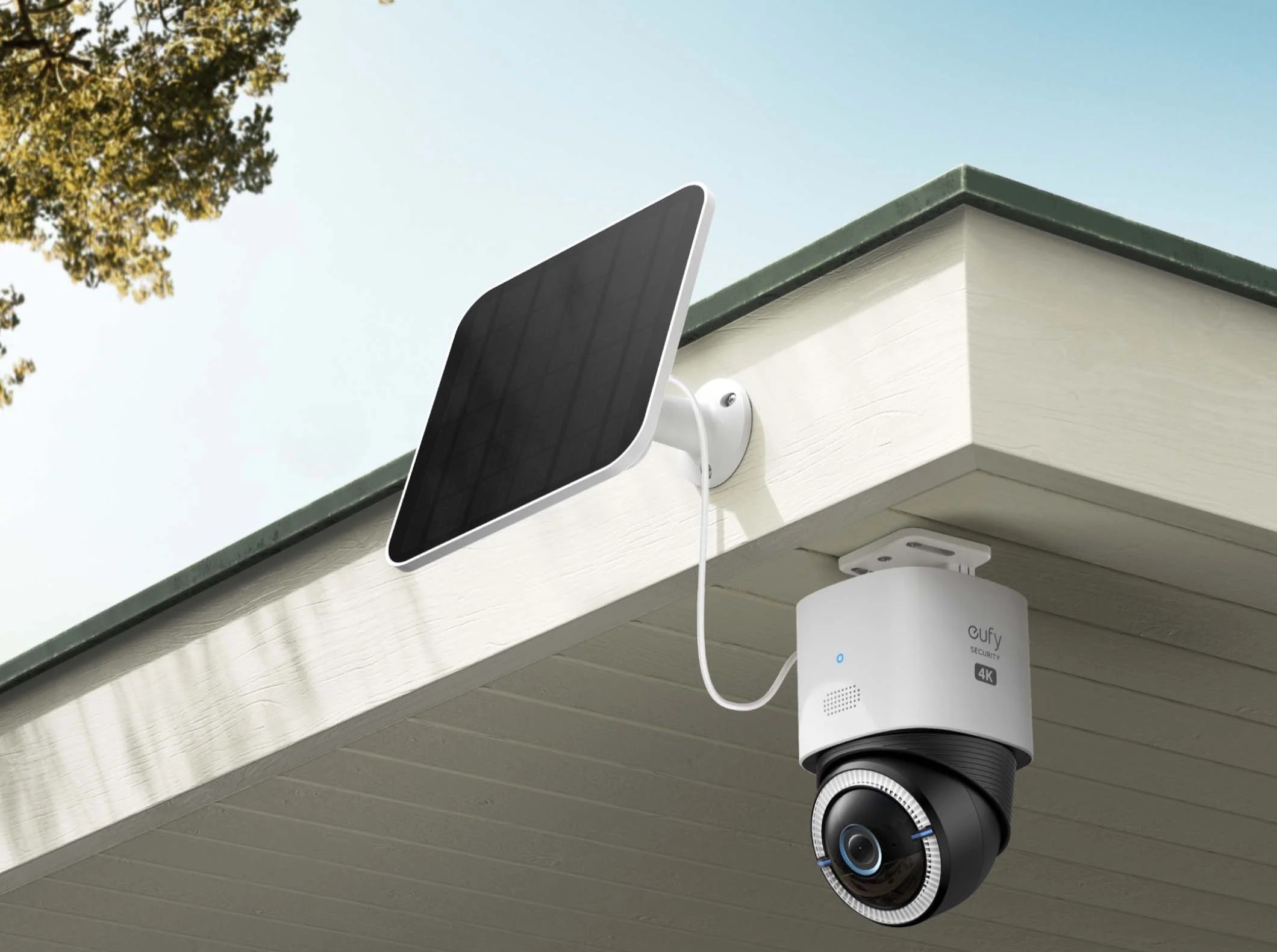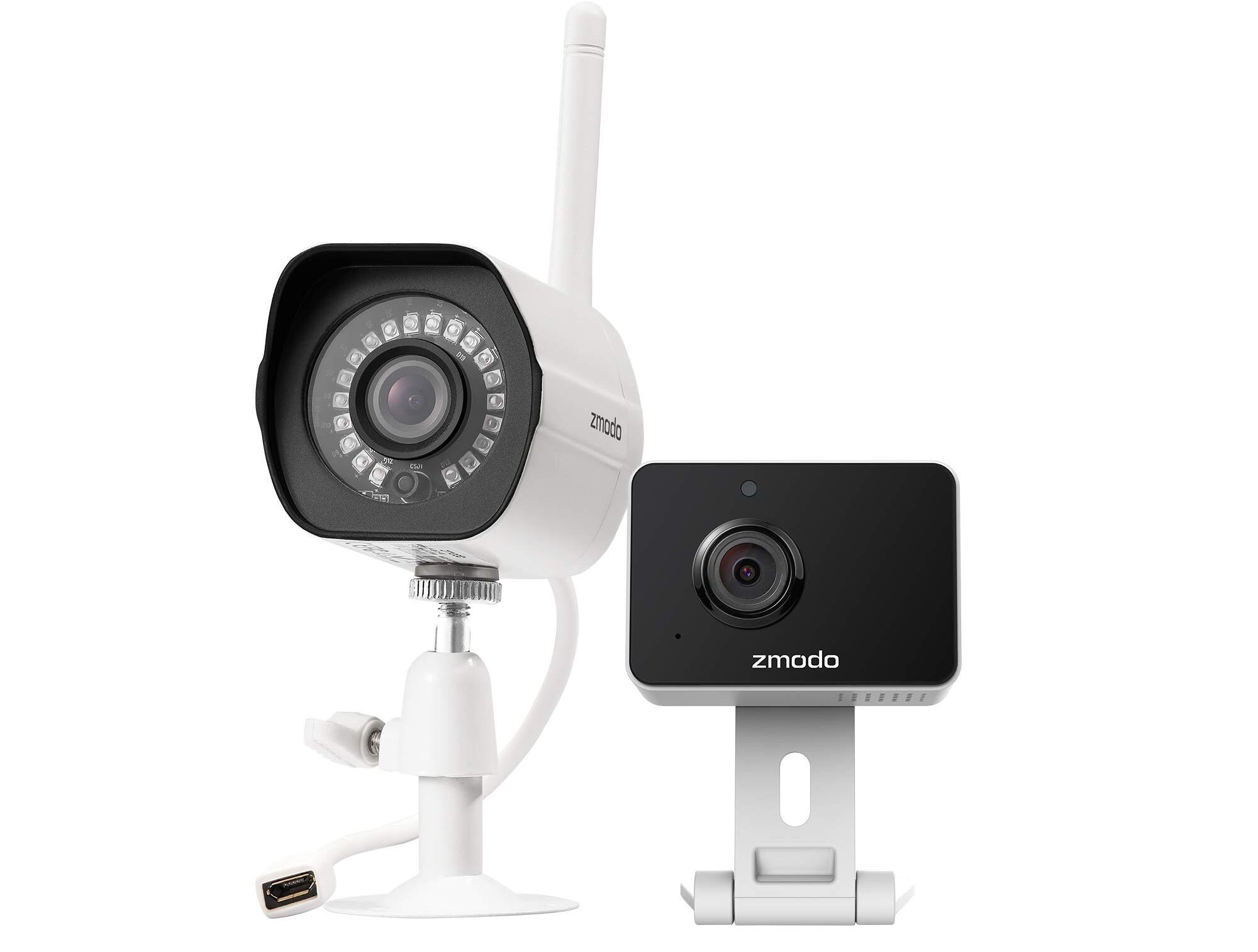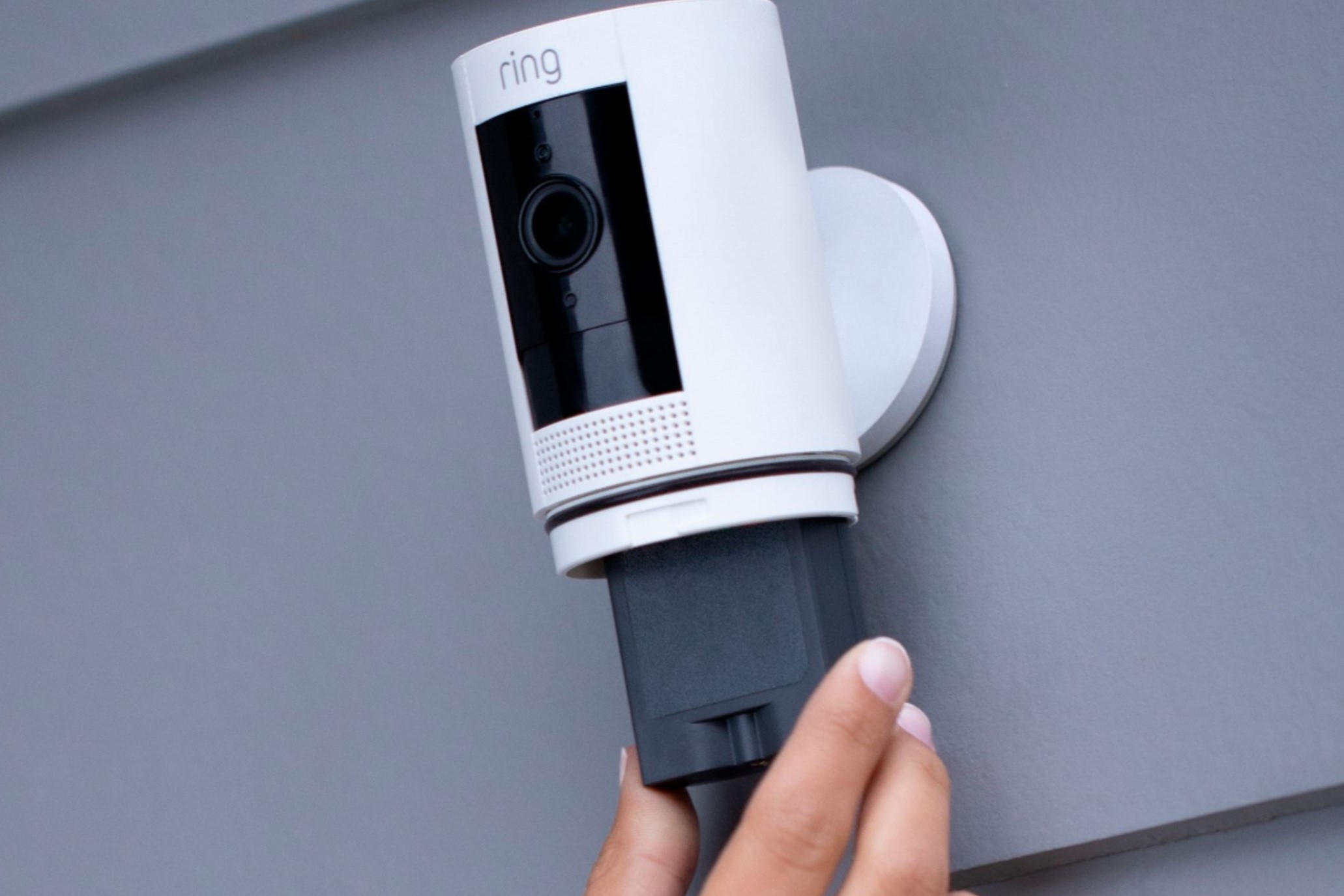Home>Home Security and Surveillance>What Is A Completely Wireless Outdoor Camera System?
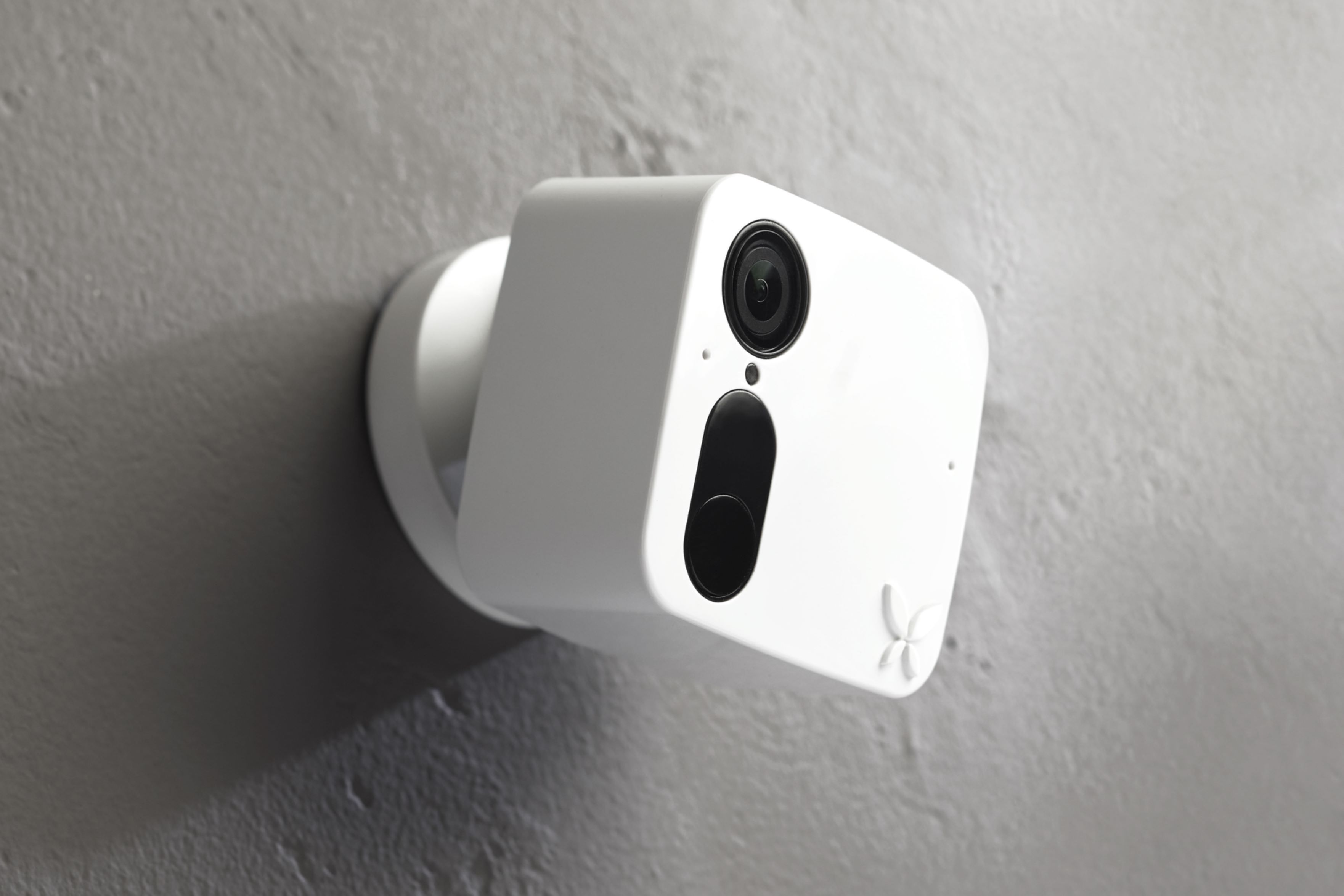

Home Security and Surveillance
What Is A Completely Wireless Outdoor Camera System?
Modified: October 19, 2024
Discover the benefits of a completely wireless outdoor camera system for your home security and surveillance needs. Enjoy hassle-free installation and flexible placement options for ultimate peace of mind.
(Many of the links in this article redirect to a specific reviewed product. Your purchase of these products through affiliate links helps to generate commission for Storables.com, at no extra cost. Learn more)
Introduction
Ensuring the security and surveillance of our homes is of paramount importance in today’s world. With advancements in technology, the home security industry has introduced innovative solutions, including completely wireless outdoor camera systems. These systems utilize cutting-edge technologies to provide homeowners with an efficient and convenient way to monitor their properties.
A completely wireless outdoor camera system is a state-of-the-art security solution that offers flexibility, convenience, and superior surveillance capabilities compared to traditional wired camera systems. Unlike their wired counterparts, completely wireless camera systems eliminate the need for running cables and wires around your property, making installation hassle-free and reducing the risk of damage to your home’s aesthetics.
These systems utilize wireless communication protocols such as Wi-Fi or cellular networks to transmit video footage and other data to your smartphone, tablet, or computer. This wireless connectivity allows you to access your camera system remotely, giving you peace of mind and the ability to monitor your property from anywhere in the world.
In this article, we will explore the features, benefits, and installation process of a completely wireless outdoor camera system. We will also discuss factors to consider when choosing a system, as well as the limitations and challenges you may encounter. By the end, you’ll have a comprehensive understanding of how this technology works and whether it is the right solution for your home security needs.
Key Takeaways:
- Completely wireless outdoor camera systems offer easy installation, remote access, and enhanced security without the hassle of cables, providing a convenient solution for monitoring your property.
- When choosing a completely wireless outdoor camera system, consider factors such as video quality, battery life, and weatherproofing to ensure reliable performance and meet your security needs.
Definition of a Completely Wireless Outdoor Camera System
A completely wireless outdoor camera system is a comprehensive security solution designed to monitor the exterior of your home or property without the need for any physical wired connections. These systems are equipped with wireless capabilities, allowing them to connect to your home’s Wi-Fi network or cellular network for seamless communication and remote access.
Unlike traditional wired camera systems that require cables to transmit video footage and power the cameras, completely wireless systems rely on batteries and wireless communication protocols such as Wi-Fi or cellular networks to function. This eliminates the need for extensive wiring, making installation easier and more flexible.
A completely wireless outdoor camera system typically consists of multiple cameras strategically positioned around the perimeter of your property. These cameras capture high-definition video footage, which is then transmitted wirelessly to a central hub or a cloud-based storage system. From there, you can access the footage using a smartphone, tablet, or computer, providing you with real-time surveillance and peace of mind.
These camera systems often come with advanced features such as motion detection, night vision, two-way audio, and weatherproofing, ensuring reliable and efficient monitoring in various conditions. Some systems even offer cloud storage options, allowing you to securely store and access your recorded footage remotely.
Overall, a completely wireless outdoor camera system offers a flexible and convenient solution for monitoring the exterior of your property. It provides enhanced security, helps deter potential intruders, and gives you the ability to monitor your home and surroundings from anywhere in the world.
Advantages of Completely Wireless Outdoor Camera Systems
Completely wireless outdoor camera systems offer numerous advantages that make them an ideal choice for homeowners seeking a convenient and efficient way to monitor their properties. Here are some of the key advantages:
Easy Installation: One of the biggest advantages of completely wireless camera systems is their easy installation process. Without the need for extensive wiring, you can quickly set up the cameras in desired locations without any professional assistance. This saves both time and money while providing you with immediate security coverage.
Flexibility: Wireless camera systems offer unmatched flexibility. You can easily reposition the cameras or add new ones as your security needs change. This flexibility allows you to adapt the system to your evolving surveillance requirements without the hassle of rewiring or drilling holes to accommodate additional cables.
Remote Access: With completely wireless camera systems, you can access the live video feed and recordings from your cameras remotely. Using a smartphone, tablet, or computer, you can view the camera footage from anywhere in the world as long as you have an internet connection. This remote access feature provides convenient monitoring capabilities and peace of mind, especially when you are away from home.
Enhanced Security: Wireless outdoor camera systems help enhance the security of your property. The presence of visible cameras acts as a deterrent to potential intruders, significantly reducing the risk of break-ins and theft. In the event of an incident, the video footage captured by the cameras can provide valuable evidence for investigations or insurance claims.
Weatherproofing: Most completely wireless outdoor cameras are designed to be weatherproof, allowing them to withstand various environmental conditions. Whether it’s rain, snow, or extreme temperatures, these cameras are built to operate reliably and provide continuous surveillance regardless of the weather conditions.
Cost-Effective: In comparison to wired camera systems, completely wireless systems can be more cost-effective. There are no additional expenses for running cables, drilling holes, or hiring professional installers. With a wireless system, you can easily expand or upgrade your security setup without incurring significant installation costs.
Easy Integration: Many completely wireless camera systems offer seamless integration with other smart home devices and automation systems. You can integrate your cameras into a smart home ecosystem, enabling functionalities such as triggering lights or sounding alarms when motion is detected.
Overall, completely wireless outdoor camera systems offer convenience, flexibility, and advanced features that enhance the security and surveillance of your property. With easy installation, remote access capabilities, and weatherproof design, these systems provide a comprehensive and reliable solution for maintaining the safety and peace of mind for you and your family.
Components of a Completely Wireless Outdoor Camera System
A completely wireless outdoor camera system consists of several essential components that work together to provide effective surveillance and security for your property. Understanding these components is key to choosing the right system and ensuring proper setup. Here are the main components of a completely wireless outdoor camera system:
Wireless Cameras: The heart of the system, wireless cameras are placed strategically around the exterior of your property to capture video footage. These cameras are equipped with wireless capabilities to connect to your home’s Wi-Fi network or cellular network. They often come with features such as high-definition resolution, wide-angle lenses, night vision, and motion detection.
Central Hub: The central hub acts as the command center for your camera system. It receives and processes the video footage and other data transmitted by the cameras. The hub typically connects to your home’s Wi-Fi network and serves as a bridge between the cameras and your remote access devices.
Power Source: While completely wireless camera systems eliminate the need for wired connections, the cameras still require power to operate. Most wireless cameras are powered by rechargeable batteries, which can last several months before needing to be recharged or replaced. Alternatively, some cameras may also offer solar-powered options for a more sustainable and long-term power source.
Wireless Connectivity: The cameras and the central hub communicate through wireless connectivity, either using Wi-Fi or cellular networks. Wi-Fi connectivity is most common, as it allows the cameras to connect to your home’s existing Wi-Fi network. Cellular connectivity can be used as a backup option when Wi-Fi signals are weak or unavailable.
Remote Access Devices: To monitor and access the camera footage remotely, you’ll need remote access devices such as smartphones, tablets, or computers. These devices allow you to view the live video feed, play back recorded footage, and manage settings through dedicated camera apps or software provided by the camera system manufacturer.
Storage: Completely wireless camera systems typically offer various storage options for storing recorded video footage. This can include local storage on a microSD card inserted into the camera, cloud storage through subscription-based services, or a combination of both. Cloud storage provides the advantage of securely storing recordings off-site, ensuring you can access them even if the camera or local storage is stolen or damaged.
Mounting Hardware: Mounting hardware is used to securely install the wireless cameras in outdoor locations. The type of mounting hardware will depend on the specific camera model and your installation preferences. Common mounting options include wall mounts, pole mounts, and adjustable brackets to achieve the desired camera angle and coverage.
When selecting a completely wireless outdoor camera system, it is important to consider the quality, compatibility, and reliability of these components. Choose cameras with the desired features, ensure that the central hub supports your preferred wireless connectivity, and opt for a storage solution that meets your recording needs. Properly installing and configuring these components will result in an effective and user-friendly surveillance system.
How a Completely Wireless Outdoor Camera System Works
A completely wireless outdoor camera system utilizes advanced technology to provide seamless surveillance and security for your property without the need for physical wires or cables. Understanding how these systems work is essential for their proper setup and operation. Here’s a breakdown of the key working mechanisms of a completely wireless outdoor camera system:
Camera Setup: To begin, you need to install and position the wireless cameras at strategic locations around the exterior of your property. These cameras are equipped with wireless capabilities, allowing them to connect to your home’s Wi-Fi network or cellular network for communication and video transmission.
Wireless Connectivity: Once the cameras are installed, they establish a wireless connection with a central hub or home router that acts as the communication hub for the system. The cameras transmit the captured video footage and other data wirelessly to this central hub through the established network connection.
Video Capture and Processing: As the wireless cameras monitor your surroundings, they capture video footage in real-time. The cameras utilize high-definition imaging sensors and lenses, enabling them to produce clear and detailed video recordings. Some cameras may also feature additional functionalities like motion detection, night vision, and two-way audio.
Transmission to Central Hub: The captured video footage is wirelessly transmitted from the cameras to the central hub or home router. This can be done through local Wi-Fi connectivity or through a cellular network if Wi-Fi signals are weak or unavailable. The central hub acts as the receiver and processor of the video feed, preparing it for remote access and storage.
Remote Access and Viewing: With the wireless cameras and central hub connected to your home network, you can access the live video feed and recordings from your cameras remotely. Using a smartphone, tablet, or computer, you can open a dedicated camera app or software provided by the camera system manufacturer to view the cameras in real-time. This allows you to monitor the security of your property from anywhere in the world.
Cloud Storage or Local Storage: Completely wireless outdoor camera systems offer various storage options for recorded video footage. Some cameras come with built-in microSD card slots for local storage, while others offer cloud storage services. Cloud storage provides a convenient and secure way to store and access your recorded footage remotely. Depending on your preference and budget, you can choose the storage option that suits your needs.
Power Source: While completely wireless camera systems eliminate the need for physical wired connections, the cameras still require a power source to operate. Most wireless cameras use rechargeable batteries, which can last for several months before requiring recharging or replacement. Some cameras may also offer solar-powered options, allowing them to operate continuously without the need for battery replacements.
Overall, a completely wireless outdoor camera system works by utilizing wireless connectivity, advanced video capture technology, and remote access capabilities to provide efficient surveillance and security for your property. By understanding how these systems operate, you can make informed decisions about their installation, configuration, and integration into your home security setup.
Read more: Which Is The Best Wireless Outdoor Camera
Installation and Setup of a Completely Wireless Outdoor Camera System
Installing and setting up a completely wireless outdoor camera system requires careful planning and attention to detail. Proper installation ensures optimal performance and coverage, allowing you to effectively monitor your property. Here are the key steps involved in the installation and setup process:
1. Assess Security Needs: Begin by assessing your security needs and determining the areas you want to monitor. Identify the vulnerable spots and entry points around your property where installing cameras would provide the best coverage. Consider factors such as line of sight, range, and potential obstacles that may affect the wireless signal.
2. Camera Placement: Once you have identified the areas for camera installation, choose suitable mounting locations. Depending on the camera model, you can mount them on walls, poles, or other surfaces. Ensure the cameras are positioned for optimal coverage and that they are protected from extreme weather conditions and tampering.
3. Mounting and Power: Use the appropriate mounting hardware provided with your camera system to securely attach the cameras in the desired locations. Follow the manufacturer’s instructions to ensure proper installation. Ensure the cameras have a clear line of sight and are positioned at the desired angles. Connect the cameras to their power source, such as rechargeable batteries or solar panels, based on the specific camera model.
4. Central Hub Setup: Set up the central hub or home router that will serve as the communication hub for your camera system. Connect the hub to your home’s Wi-Fi network or cellular network, following the manufacturer’s instructions. Some camera systems may require you to download specific apps or software to configure and manage the hub settings.
5. Network Configuration: Configure the network settings for your wireless camera system. This may involve assigning unique IP addresses to the cameras, setting up port forwarding if necessary, and enabling any required security protocols, such as encryption or password protection. Consult the user manual or contact customer support for guidance on network configuration specific to your camera system.
6. Wireless Camera Pairing: Pair the wireless cameras with the central hub or home router. This process may involve pressing a sync button on the cameras or entering specific codes or passwords in the camera system’s app or software. Follow the manufacturer’s instructions carefully to ensure successful pairing between the cameras and the central hub.
7. Mobile and Remote Access: Download the dedicated camera system app or software onto your smartphone, tablet, or computer. Follow the setup instructions to connect the app or software to your wireless camera system. This will enable remote access to the live video feed and recorded footage from anywhere with an internet connection. Set up any desired notification settings to receive alerts and updates from the camera system.
8. Testing and Fine-Tuning: Once the installation and setup are complete, it is crucial to test the camera system’s functionality. Ensure that the cameras are capturing clear video footage, the live feed is accessible remotely, and any configured notifications are working as expected. Adjust camera angles or placement if needed for better coverage or to eliminate blind spots.
Proper installation and setup of a completely wireless outdoor camera system are essential for maximizing its effectiveness and performance. By following these steps and carefully configuring the system, you can enjoy seamless surveillance and enhanced security for your home or property.
When choosing a completely wireless outdoor camera system, look for one with long battery life, weatherproof design, and easy installation. Make sure it has reliable Wi-Fi connectivity and a mobile app for remote viewing.
Factors to Consider When Choosing a Completely Wireless Outdoor Camera System
When choosing a completely wireless outdoor camera system, several factors should be taken into consideration to ensure that you select a system that meets your security needs and provides reliable performance. Here are the key factors to consider:
Video Quality: The video quality of the cameras is an important consideration. Look for cameras that offer high-definition (HD) resolution and excellent image clarity. This will ensure that you can capture clear and detailed video footage, allowing for easy identification of people or objects in the recorded footage.
Wireless Range: Consider the wireless range of the camera system. Choose a system that can reliably transmit video footage from the cameras to the central hub or home router, even when the cameras are located at a considerable distance from the hub. Ensure that the system’s wireless range covers the entire area you intend to monitor.
Battery Life: Since completely wireless camera systems rely on batteries for power, it is important to consider the battery life of the cameras. Look for cameras that offer long-lasting battery life, allowing for extended periods of surveillance before the batteries need to be recharged or replaced. It is also worth considering if the cameras have battery-saving features when not in use.
Field of View: The field of view of the cameras determines the area that will be covered by each camera. Consider cameras with wide-angle lenses that provide a broad field of view, reducing the number of cameras required to monitor a given area. This can save you both cost and installation efforts.
Weatherproofing: Outdoor cameras are exposed to the elements, so it is crucial to choose cameras that are weatherproof. Look for cameras with an IP65 or IP66 rating, indicating that they are protected against dust and water ingress. This ensures that the cameras can withstand various weather conditions, including rain, snow, and extreme temperatures.
Night Vision: Consider cameras with infrared (IR) LEDs or other low-light technologies to ensure effective surveillance even in low-light or nighttime conditions. This allows the cameras to capture clear video footage during the night, providing continuous monitoring around the clock.
Motion Detection: Cameras with motion detection capabilities are valuable for minimizing false alerts and conserving storage space. Look for cameras that offer customizable motion detection settings, allowing you to define specific motion zones and adjust sensitivity levels. This ensures that you receive notifications only when motion is detected in the areas of interest.
Storage Options: Consider the storage options available with the camera system. Some systems offer local storage options with built-in microSD card slots, while others provide cloud storage services. Determine your storage needs and preferences and choose a system that offers the most suitable storage solution for you.
Integration and Compatibility: If you have an existing smart home ecosystem or other security devices, consider the compatibility and integration capabilities of the camera system. Look for systems that can seamlessly integrate with your other devices or platforms, allowing for centralized control and automation functionalities.
Price and Budget: Last but not least, consider your budget when selecting a completely wireless outdoor camera system. Prices can vary based on the number of cameras, features, and brand reputation. Determine your budget and prioritize the must-have features to find a system that strikes the right balance between price and functionality.
By considering these factors, you can make an informed decision when choosing a completely wireless outdoor camera system that suits your security needs and provides reliable performance for monitoring your property.
Limitations and Challenges of Completely Wireless Outdoor Camera Systems
While completely wireless outdoor camera systems offer numerous benefits, they also have certain limitations and challenges that should be taken into account. Understanding these limitations will help you make an informed decision and effectively address any challenges that may arise. Here are some key limitations and challenges of completely wireless outdoor camera systems:
Internet Connectivity: Since completely wireless camera systems rely on Wi-Fi or cellular networks for communication and remote access, a stable and reliable internet connection is crucial. If your internet connection goes down or becomes weak, it may affect the real-time video streaming and remote access capabilities of your camera system. Consider the strength and consistency of your internet connection before investing in a wireless camera system.
Wireless Range: The wireless range of the camera system can be a limitation. The distance between the cameras and the central hub or home router should be within the specified wireless range to ensure reliable communication. If the cameras are located too far away from the central hub, the signal strength may weaken, resulting in intermittent or dropped connections. Carefully plan camera placements and consider potential obstructions such as walls or large objects that may affect the wireless range.
Battery Life: Completely wireless cameras rely on batteries for power, so battery life is an important consideration. Depending on camera usage and settings, the batteries may need to be recharged or replaced periodically. It is crucial to monitor the battery levels and have a charging or replacement schedule to ensure uninterrupted surveillance. Extreme temperatures can also affect battery performance, potentially shortening their lifespan.
Video Quality and Latency: While wireless camera systems offer high-definition video capture, there may be limitations in terms of video quality and latency. Factors such as signal strength, network congestion, and distance can impact the quality and delay of the video feed. In some cases, live video streaming may experience a slight delay or reduced video quality compared to directly wired systems. Consider the trade-off between wireless convenience and video performance when choosing a completely wireless camera system.
Security Concerns: Wireless camera systems transmit video footage and other data over wireless networks, making them potentially vulnerable to hacking or unauthorized access. To mitigate security risks, ensure that your camera system uses secure encryption protocols and has strong password protection features. Regularly update the camera system’s firmware to incorporate the latest security enhancements. Additionally, network security measures like secure Wi-Fi networks and firewalls should be implemented to protect your camera system from potential threats.
Limited Expandability: Completely wireless camera systems may have limitations in terms of expandability. The number of cameras that can be added to the system may be limited, depending on the capacity of the central hub and the available network bandwidth. Before purchasing a system, consider the scalability and potential future needs to ensure that it can accommodate your long-term surveillance requirements.
Environmental Factors: Outdoor environments can pose challenges for wireless camera systems. Adverse weather conditions such as heavy rain, strong winds, or extreme temperatures can affect camera performance. Ensure that the cameras you choose are weatherproof and designed to withstand the elements. Regularly inspect and maintain the cameras to mitigate any potential issues caused by environmental factors.
By understanding these limitations and challenges, you can take appropriate measures to mitigate them and make the most of your completely wireless outdoor camera system. Regularly updating firmware, monitoring battery levels, ensuring network security, and considering environmental factors will help maintain the reliability and effectiveness of your wireless camera system.
Comparison between Wired and Wireless Outdoor Camera Systems
When it comes to choosing between wired and wireless outdoor camera systems, it is important to understand the key differences and factors to consider. Here is a comparison between the two types of systems:
Installation: Wired camera systems require running cables and wires to connect the cameras to a central recording device or monitoring station. This can be labor-intensive and may require professional installation. On the other hand, wireless camera systems eliminate the need for cables, making installation faster and easier. Simply mount the cameras in desired locations and connect them wirelessly to a central hub or home router.
Flexibility: Wireless camera systems offer greater flexibility compared to wired systems. With wireless cameras, you have the freedom to reposition and relocate the cameras as needed without the hassle of rearranging cables. This flexibility allows for easy adjustments to your security setup, accommodating changes in surveillance needs or property layout.
Video Quality: In terms of video quality, both wired and wireless systems can offer high-definition resolution and clear video footage. However, wired systems may have a slight advantage in terms of consistent video quality and minimal latency since they do not rely on wireless signal transmissions.
Reliability: Wired camera systems are generally considered more reliable than wireless systems. They provide a dedicated and continuous connection between the cameras and the recording device, minimizing the risk of signal interruptions. Wireless systems, on the other hand, are subject to potential signal interference or weak Wi-Fi connectivity, which can lead to video dropouts or delays.
Range: In terms of range, wired camera systems have a clear advantage. The use of physical cables allows for longer distance coverage between the cameras and the recording device. Conversely, wireless systems have a limited range, and the distance between the cameras and the central hub should be within the specified wireless range for optimal performance.
Maintenance: Wired camera systems require less ongoing maintenance compared to wireless systems. Once installed, wired systems generally operate reliably without the need to monitor battery levels, recharge or replace batteries. In contrast, wireless systems require periodic battery maintenance to ensure uninterrupted surveillance.
Expandability: Wired camera systems may offer more expandability options compared to wireless systems. With wired systems, you can easily add more cameras by extending the cable infrastructure. In wireless systems, the number of cameras that can be added may be limited by factors such as the capacity of the central hub or network bandwidth.
Cost: Generally, wireless camera systems are more cost-effective in terms of upfront installation costs. The absence of cabling requirements reduces labor and material costs. However, wireless systems may require ongoing battery replacement or recharging costs. Wired systems, while potentially more expensive to install, do not have recurring battery costs.
Ultimately, the choice between wired and wireless outdoor camera systems depends on your specific needs, preferences, and constraints. Consider factors such as installation ease, flexibility, video quality, reliability, range, maintenance requirements, expandability, and cost when making your decision. Assess your property layout, surveillance goals, and available resources to determine the system that best fits your situation.
Popular Brands of Completely Wireless Outdoor Camera Systems
When it comes to choosing a completely wireless outdoor camera system, several reputable brands offer reliable and feature-rich options. Here are some popular brands known for their high-quality completely wireless camera systems:
1. Arlo: Arlo, a brand owned by NETGEAR, is well-regarded for its wireless camera systems. Arlo cameras offer high-definition image quality, night vision capabilities, motion detection, and cloud storage options. Their cameras are known for their ease of installation, sleek designs, and user-friendly mobile app for remote monitoring.
2. Blink: Blink, now part of Amazon, provides compact and affordable wireless camera systems. Their cameras offer HD video capture, two-year battery life, and motion detection capabilities. Blink’s camera systems are easy to install, and they integrate seamlessly with other smart home devices like the Amazon Echo.
3. Ring: Ring, a subsidiary of Amazon, is known for its comprehensive home security solutions, including wireless outdoor cameras. Ring cameras offer features such as HD video, motion-activated notifications, two-way audio, and integration with the Ring app. They also offer various mounting options and solar-powered cameras for extended use.
4. Nest: Nest, now part of Google, offers wireless outdoor cameras that combine security with smart home features. Nest cameras provide high-quality video footage, advanced motion detection, continuous recording options, and integration with the Nest mobile app. They also offer facial recognition capabilities and compatibility with other Nest devices, such as smart thermostats and doorbells.
5. Eufy: Eufy, a division of Anker, offers wireless outdoor cameras with features like 2K resolution, advanced AI detection, customizable activity zones, and low-light recording capabilities. Eufy cameras are known for their long-lasting battery life and straightforward installation process. They also offer local storage options and easy integration with other Eufy security products.
6. Reolink: Reolink specializes in wireless outdoor camera systems that provide high-resolution video, advanced night vision, and motion detection features. Their cameras are weatherproof and offer easy installation options. Reolink also provides various storage options, including local storage on a microSD card or network-attached storage (NAS).
7. Hikvision: Hikvision is a leading manufacturer of security camera systems, offering a range of wireless outdoor cameras. Hikvision cameras provide high-quality video surveillance, advanced motion detection, and wide viewing angles. They offer options for cloud storage, local storage, or dedicated network video recorders (NVRs) for storing video footage.
8. Swann: Swann is known for its extensive range of wireless outdoor cameras and complete home security systems. Swann cameras feature high-definition video, night vision capabilities, and motion detection. Their camera systems offer local and cloud storage options, mobile app integration, and compatibility with voice assistants like Google Assistant and Alexa.
These brands have established trust and credibility in the home security industry, offering reliable and feature-rich completely wireless outdoor camera systems. While considering a particular brand, be sure to review customer reviews, compare product specifications, and evaluate specific features that align with your security needs and budget.
Conclusion
Completely wireless outdoor camera systems have revolutionized home security and surveillance, providing homeowners with an efficient, convenient, and reliable way to monitor their properties. These systems offer numerous advantages, including easy installation, flexibility, remote access capabilities, enhanced security, and cost-effectiveness.
A completely wireless outdoor camera system consists of wireless cameras, a central hub, power source, wireless connectivity, remote access devices, storage options, and mounting hardware. The installation and setup process involves assessing security needs, camera placement, central hub setup, network configuration, wireless camera pairing, and testing.
When choosing a completely wireless outdoor camera system, it is important to consider factors such as video quality, wireless range, battery life, field of view, weatherproofing, night vision, motion detection, storage options, integration, compatibility, and price. Understanding the limitations and challenges, such as internet connectivity, wireless range, battery life, and potential security concerns, will help you address any issues and make an informed decision.
In comparison to wired camera systems, completely wireless outdoor camera systems offer easier installation, flexibility, and remote access capabilities. However, wired systems may provide more reliable performance, longer range, and less ongoing maintenance. Consider your specific needs and constraints when deciding between the two.
Various popular brands offer completely wireless outdoor camera systems, including Arlo, Blink, Ring, Nest, Eufy, Reolink, Hikvision, and Swann. These brands are known for their high-quality cameras, innovative features, user-friendly interfaces, and reliable performance.
In conclusion, completely wireless outdoor camera systems provide an effective and convenient solution for monitoring the security of your property. By understanding the features, benefits, installation process, and factors to consider, you can choose the right system that suits your needs and ensures the safety and peace of mind for you and your family.
Frequently Asked Questions about What Is A Completely Wireless Outdoor Camera System?
Was this page helpful?
At Storables.com, we guarantee accurate and reliable information. Our content, validated by Expert Board Contributors, is crafted following stringent Editorial Policies. We're committed to providing you with well-researched, expert-backed insights for all your informational needs.
